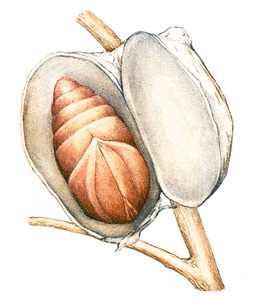Pupa, << PYOO puh, >> is the relatively inactive stage in the metamorphosis (development) of most insects. In complete metamorphosis, the larva feeds until fully grown (see Larva). It then molts into the pupa, a temporary form in which the adult structures develop. The adult insect emerges by splitting open the pupal “skin” and crawling out. The pupal stage may last a day or two, or up to one or more years, depending on the species. This stage enables some adult insects, such as butterflies, to have features that differ greatly from those of the larva. It also allows the developing insect to avoid such conditions as extreme heat and cold, famine, and drought.

The pupa looks different in different species. Butterfly and moth pupae are mummylike with the wings, antennae, and legs encased in the pupal shell. The pupae of beetles, lacewings, and bees have legs and antennae that hang free. Many insects form a cocoon of silk or other materials and pupate in it. Most moths form cocoons. The butterfly pupa, called a chrysalis, hangs from a silklike pad and does not have a cocoon. The house fly and related flies inflate the next-to-last larval skin to form a cocoon called a puparium.
